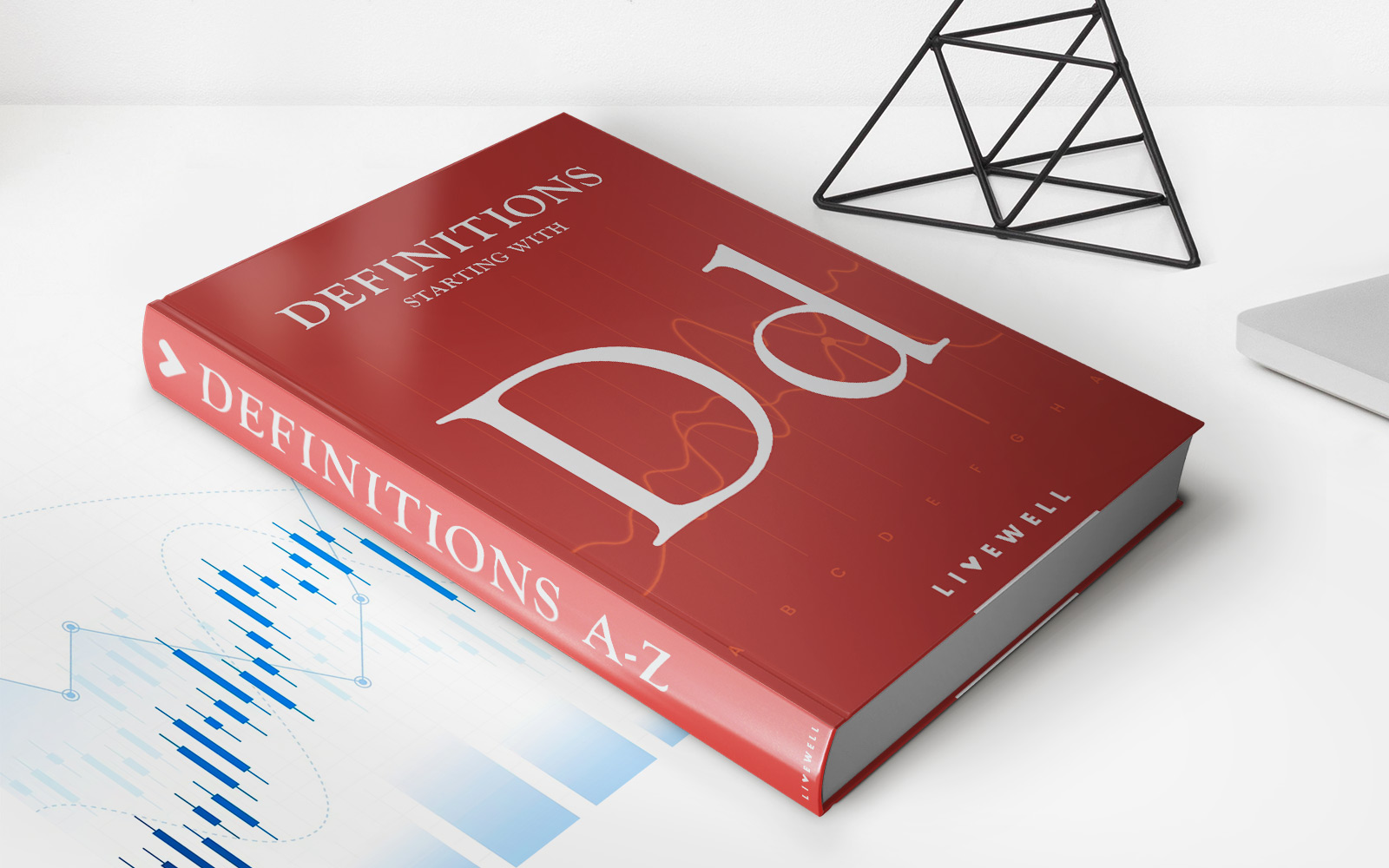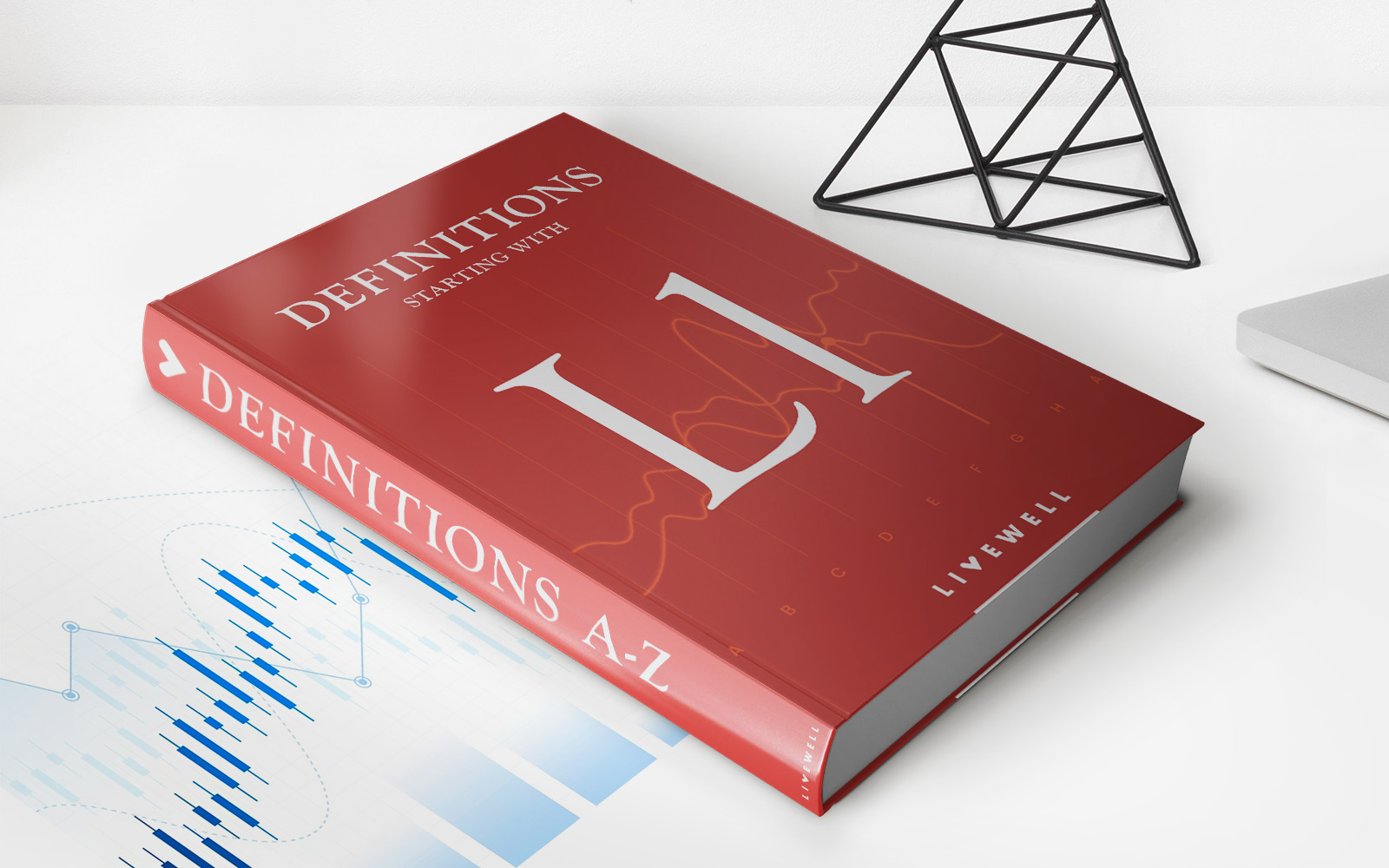Home>Finance>What Is True About A Firm’s Optimal Capital Structure


Finance
What Is True About A Firm’s Optimal Capital Structure
Modified: December 29, 2023
Find out the key factors determining a firm's optimal capital structure in finance. Learn how it affects profitability and risk management.
(Many of the links in this article redirect to a specific reviewed product. Your purchase of these products through affiliate links helps to generate commission for LiveWell, at no extra cost. Learn more)
Table of Contents
Introduction
Welcome to the world of finance, where the concept of capital structure plays a crucial role in determining the financial health and sustainability of a firm. Capital structure refers to the mix of debt and equity financing that a company utilizes to fund its operations and investments. Achieving an optimal capital structure is essential for companies as it impacts their profitability, risk profile, and ability to grow.
In this article, we will explore the factors that influence a firm’s optimal capital structure and the different theories that attempt to explain this phenomenon. Understanding these theories and factors can provide valuable insights for companies in making strategic financing decisions.
It is important to note that there is no one-size-fits-all approach when it comes to determining the optimal capital structure for a company. The optimal capital structure varies depending on factors such as the industry, size of the company, growth prospects, and risk tolerance.
As we delve deeper into this topic, we will explore theories such as the Modigliani-Miller theorem, trade-off theory, and pecking order theory. These theories provide different perspectives on how firms should structure their financing to maximize value and mitigate risk.
Furthermore, we will examine empirical evidence on optimal capital structure to see how these theories hold up in the real world. By analyzing real-world data, we can gain a better understanding of the factors that drive capital structure decisions and their impact on company performance.
Overall, our aim is to provide you with a comprehensive understanding of capital structure and its significance in the financial management of a firm. Whether you are a student, an entrepreneur, or a finance professional, this article will enhance your knowledge and equip you with valuable insights into the complexities of capital structure decisions.
Definition of Capital Structure
Capital structure refers to the way a company finances its operations and investments by utilizing different sources of funds, including debt and equity. It represents the mix of long-term debt, preferred stock, and common equity that a company uses to support its activities.
Debt financing involves borrowing money from external sources, such as banks or bondholders, and repaying it over a specified period with interest. Equity financing, on the other hand, involves raising funds from shareholders in exchange for ownership in the company.
The capital structure decision is of critical importance for a company as it determines the company’s risk profile, cost of capital, and financial flexibility. A well-balanced capital structure can enhance a company’s ability to grow, seize opportunities, and withstand economic downturns, while an imbalanced capital structure can leave a company vulnerable to financial distress and hinder growth prospects.
Companies strive to achieve an optimal capital structure, which is the ideal mix of debt and equity that maximizes shareholder value. While there is no one-size-fits-all approach, the optimal capital structure typically balances the benefits and costs of debt and equity financing.
Debt financing offers advantages such as tax deductibility of interest payments, lower cost of capital, and fixed interest payments that provide stability. However, excessive debt can increase financial risk, as the company must meet the obligations of interest payments and principal repayment, which can strain cash flows.
Equity financing, on the other hand, provides flexibility, as there is no obligation to make fixed interest payments or repay principal. It also shares the risk with shareholders, as they are only entitled to dividends after all other obligations have been met. However, issuing equity dilutes ownership and can result in a higher cost of capital.
The optimal capital structure considers a company’s industry, size, growth prospects, and risk appetite. For example, companies in stable industries with consistent cash flows may have a higher proportion of debt in their capital structure. In contrast, companies in highly cyclical or high-growth industries may rely more on equity financing to maintain financial flexibility.
Ultimately, the goal for companies is to strike the right balance in their capital structure to achieve an optimal level of risk and return. By carefully considering the mixture of debt and equity, companies can position themselves for long-term success and create value for their stakeholders.
Factors Influencing a Firm’s Optimal Capital Structure
The optimal capital structure of a firm is influenced by a variety of factors that reflect the company’s characteristics, industry dynamics, and market conditions. It is important for companies to carefully consider these factors when making financing decisions. The key factors that influence a firm’s optimal capital structure are:
- Business Risk: The level of business risk, which refers to the uncertainty and variability of a company’s cash flows, plays a significant role in determining the optimal capital structure. Companies with higher business risk, such as those operating in volatile industries or with uncertain future cash flows, may prefer a lower level of debt to mitigate the risk of financial distress.
- Financial Risk: Financial risk refers to the risk associated with a company’s capital structure and its ability to meet its financial obligations. Companies with higher financial risk, such as those with significant amounts of debt, may face higher interest expenses and have limited financial flexibility. These companies may opt for a more conservative capital structure with a lower level of debt to reduce their risk of default and maintain access to financing.
- Industry Characteristics: The characteristics of the industry in which a company operates can also influence its optimal capital structure. Industries with stable cash flows and low business risk, such as utilities or consumer staples, may have a higher proportion of debt in their capital structure. On the other hand, industries with high growth potential or significant uncertainties, such as technology or biotech, may rely more on equity financing to fund their expansion and innovation.
- Access to Capital: The availability and cost of capital significantly impact a company’s capital structure decisions. Companies with easy access to debt markets at favorable interest rates may be more inclined to use debt financing to fund their operations and investments. Conversely, companies with limited access to debt markets or with high borrowing costs may rely more on equity financing.
- Tax Considerations: The tax environment in which a company operates can influence its optimal capital structure. Interest payments on debt are generally tax-deductible, reducing the after-tax cost of borrowing. This tax shield makes debt financing more attractive from a cost perspective. As a result, companies operating in higher tax jurisdictions may be more inclined to use debt financing to take advantage of the tax benefits.
- Growth Opportunities: The growth opportunities available to a company also play a role in determining its optimal capital structure. Companies with significant growth prospects may choose to retain earnings and rely on internal sources of financing to fund their expansion. Alternatively, companies with limited growth opportunities may prefer to distribute earnings to shareholders and rely on external financing, such as debt or equity issuance, to meet their capital needs.
It is important to note that these factors do not act in isolation, but rather interact with each other to influence a firm’s capital structure decisions. Companies must consider their unique circumstances and strike a balance that aligns with their long-term objectives and risk appetite. By carefully evaluating these factors and assessing the trade-offs between debt and equity financing, companies can determine their optimal capital structure and position themselves for sustainable growth and profitability.
Modigliani-Miller Theorem
The Modigliani-Miller theorem, formulated by economists Franco Modigliani and Merton Miller in the 1950s, is a fundamental theory in corporate finance that explores the relationship between capital structure and firm value. The theorem asserts that, under certain assumptions, the value of a company is independent of its capital structure.
According to the Modigliani-Miller theorem, in a world with perfect capital markets, no taxes, no transaction costs, and no bankruptcy costs, the market value of a firm is determined solely by its earning power and the risk of its underlying assets. This proposition is known as the irrelevance proposition of capital structure.
The theorem argues that investors can recreate the effect of a company’s capital structure on their own by adjusting their own portfolios. For example, if a company increases its debt and decreases its equity, the investors can replicate that effect by borrowing on their own to buy more shares of the company or by leveraging their existing investments. Therefore, the capital structure decisions of a company do not have any impact on the firm value.
The Modigliani-Miller theorem challenges the traditional belief that increasing the proportion of debt financing in a company’s capital structure increases its value. It suggests that the value of a company is determined by its ability to generate earnings and the risk of its operations, rather than the composition of its financing sources. This implies that companies cannot create value simply by increasing their debt levels.
However, it is essential to note that the assumptions made in the Modigliani-Miller theorem do not hold in the real world. In reality, there are factors such as taxes, bankruptcy costs, information asymmetry, and agency costs that impact capital structure decisions and can affect firm value.
Despite its limitations, the Modigliani-Miller theorem has had a significant impact on the field of finance. It laid the foundation for subsequent theories and empirical research on capital structure and provided a benchmark against which other theories are compared. The theorem also emphasized the importance of considering the overall financial strategy and the risks associated with different financing choices.
In summary, the Modigliani-Miller theorem suggests that, under ideal market conditions, the capital structure of a firm does not affect its underlying value. However, in practice, other factors come into play, making the selection of an optimal capital structure a complex and essential decision for companies seeking to maximize their value in real-world scenarios.
Trade-off Theory of Capital Structure
The trade-off theory of capital structure suggests that there is an optimal level of debt for a company that balances the benefits of debt financing with the costs and risks associated with it. Developed by economists and finance scholars, the trade-off theory acknowledges the trade-offs that companies face when determining their capital structure.
According to the trade-off theory, companies consider the following factors when deciding their optimal capital structure:
- Tax Advantage: Debt financing provides a tax advantage as interest payments can be deducted from taxable income, reducing the overall tax liability of the company. This tax shield lowers the cost of debt financing and increases the attractiveness of taking on more debt.
- Financial Distress Costs: However, excessive debt can lead to increased financial distress costs. If a company becomes unable to meet its debt obligations, it may face bankruptcy or have to undergo costly restructuring. These financial distress costs can include legal fees, loss of business opportunities, and damage to the company’s reputation. As a result, companies must consider the probability and potential impact of financial distress when determining their level of debt.
- Agency Costs: Debt financing can also help mitigate agency costs between shareholders and managers. When a company takes on debt, lenders become additional stakeholders with an interest in monitoring the company’s performance and ensuring that managers act in the best interest of all stakeholders. This can align the interests of managers and shareholders and reduce agency costs.
- Flexibility and Financial Flexibility: Maintaining flexibility is another consideration in capital structure decisions. Companies that anticipate future investment opportunities or unforeseen events may prefer to have more equity financing to maintain financial flexibility. Additionally, companies with volatile earning streams or uncertain economic conditions may opt for lower levels of debt to avoid the risk of financial distress.
Based on these considerations, the trade-off theory suggests that there is an ideal level of debt that maximizes the value of a company by balancing the tax benefits of debt financing with the potential costs and risks associated with it.
It is important to note that the optimal capital structure varies for each company and depends on factors such as industry characteristics, growth prospects, and risk appetite. High-growth companies may prioritize equity financing to fund their expansion, while companies in stable industries may use more debt financing to take advantage of tax benefits.
The trade-off theory of capital structure provides a framework for companies to make informed financing decisions. By carefully weighing the benefits and costs of debt, companies can determine their optimal capital structure and balance their financial needs with risk mitigation strategies. However, it is crucial for companies to regularly assess their capital structure in light of changing market conditions and their own financial circumstances.
Pecking Order Theory of Capital Structure
The pecking order theory of capital structure, proposed by economists Myers and Majluf in 1984, suggests that companies have a preferred hierarchy or “pecking order” when it comes to financing their operations and investments. According to this theory, companies prioritize financing sources based on their cost and availability, leading to a distinct capital structure pattern.
The pecking order theory is based on the following principles:
- Internal Financing: Companies prefer to use internal financing first, such as retained earnings or operating cash flows, to fund their activities. This is because internal financing is considered the least costly and least risky option since it does not require borrowing or diluting ownership.
- Debt Financing: If internal financing is insufficient, companies will then turn to debt financing as the second option. Debt can be raised through borrowing from banks, issuing bonds, or other forms of debt instruments. Debt financing is often preferred over issuing new equity because it does not dilute ownership and interest payments are tax-deductible, providing a tax shield.
- Equity Financing: Equity financing is considered the last resort for companies under the pecking order theory. This is because issuing new equity can result in dilution of ownership and may signal to the market that the company’s stock is undervalued. As a result, equity financing is often used when other financing sources are not available or when the cost of debt financing becomes prohibitively high.
The pecking order theory suggests that companies prefer internal financing and debt financing over equity financing due to lower costs and risks. Internal financing is readily available without incurring additional costs, while debt financing allows companies to enjoy the tax benefits of interest deductions and maintain control without dilution of ownership.
The theory also implies that the capital structure of a company is not actively managed or determined by optimizing a specific target debt-to-equity ratio. Instead, it is a result of financing decisions made on a pragmatic basis and driven by the specific circumstances of the company at a given time.
It is important to note that while the pecking order theory provides valuable insights, it does not account for all factors that influence capital structure decisions. External factors such as market conditions, regulatory requirements, and investor preferences can also impact a company’s financing choices.
In practice, companies must carefully consider their unique circumstances, including their growth prospects, risk tolerance, and access to different financing sources, to determine the most appropriate capital structure. By aligning their financing decisions with the principles of the pecking order theory, companies can maintain financial flexibility, optimize costs, and minimize the risks associated with capital structure choices.
Empirical Evidence on Optimal Capital Structure
Empirical research has been conducted to analyze the relationship between a firm’s capital structure and its financial performance. While various studies have yielded mixed results, they provide valuable insights into the factors that influence optimal capital structure decisions.
One common finding in the empirical literature is the existence of a U-shaped relationship between debt and firm value. This indicates that firms with moderate levels of debt tend to have higher values compared to those with very low or very high levels of debt. This finding suggests that there is an optimal capital structure that balances the benefits and costs of debt financing.
Additionally, many studies have supported the relevance of factors such as profitability, size, growth opportunities, tangibility of assets, and industry characteristics in explaining a firm’s capital structure. Profitable firms, larger firms, and firms with higher growth prospects are found to have a higher propensity to use debt in their capital structure. Firms with tangible assets, such as manufacturing companies, also tend to have higher debt levels due to the availability of collateral.
Furthermore, empirical evidence supports the role of institutional factors in capital structure decisions. Factors such as legal systems, investor protection, and access to financial markets have been found to influence capital structure choices. Companies operating in countries with robust legal systems and strong investor protections tend to have higher debt levels, as there is greater confidence in the enforcement of contracts and protection of investor rights.
It is worth noting that empirical research also highlights the impact of industry-specific factors on capital structure decisions. Industries with unique characteristics, such as high research and development costs in the technology sector or heavy regulation in utilities, may require specific financing approaches that deviate from general trends observed across industries.
Moreover, empirical studies have found that the optimal capital structure may vary depending on the economic conditions. During periods of economic downturns or financial crises, companies may choose to reduce their debt levels to mitigate financial risk. On the other hand, during periods of economic expansion and favorable market conditions, companies may take advantage of low borrowing costs and increased access to capital markets to increase their debt levels.
While empirical evidence provides valuable insights, it is important to remember that the optimal capital structure is not a one-size-fit-all solution. Each company has unique characteristics, industry dynamics, and risk tolerance. Therefore, companies should consider a range of factors, both theoretical and empirical, to make informed capital structure decisions that align with their specific circumstances and long-term objectives.
Conclusion
Capital structure is a critical aspect of financial management for companies, as it determines the mix of debt and equity financing that supports their operations and investments. While the optimal capital structure varies for each company based on its industry, size, growth prospects, and risk appetite, several theories provide insights into the decision-making process.
The Modigliani-Miller theorem suggests that, under ideal market conditions, a firm’s value is independent of its capital structure. However, in the real world, factors such as taxes, bankruptcy costs, and agency costs come into play, challenging this theorem.
The trade-off theory recognizes the trade-offs companies face when determining their capital structure, weighing the tax advantages of debt financing against the costs and risks associated with it. It emphasizes finding an optimal level of debt that maximizes firm value.
The pecking order theory explains how companies prioritize financing sources based on their cost and availability, with internal financing and debt financing preferred over equity financing.
Empirical evidence supports the existence of an optimal capital structure that balances debt levels for firms’ financial performance. Profitability, size, growth opportunities, asset tangibility, industry characteristics, and institutional factors all influence a firm’s capital structure decisions.
In conclusion, determining the optimal capital structure is a complex task that requires careful consideration of multiple factors and the trade-offs associated with different financing sources. Companies must evaluate their unique circumstances, risk tolerance, and growth prospects to determine the most appropriate capital structure that aligns with their long-term objectives. Continuous monitoring and adjustments to the capital structure are key, as market conditions and company dynamics evolve over time. By striking the right balance, companies can optimize their financial structure and enhance their chances of sustainable growth and profitability.














